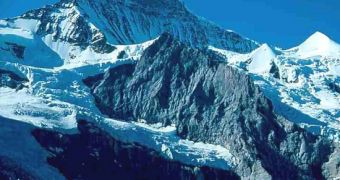Glaciers in the European Alps first began retreating in the 1860s, about 5 decades before global warming kicked in.
According to a paper published in yesterday's issue of the journal Proceedings of the National Academy of Sciences, soot was the main trigger behind this phenomenon.
Researchers explain that, between the years 1860 and 1930, mountain glaciers in said part of the world started to retreat seemingly out of the blue.
More precisely, records show that large valley glaciers shrank by an average of roughly 1 kilometer (0.6 miles), EurekAlert reports.
Oddly enough, this retreating of the glaciers in the European Alps occurred at a time when local temperatures experienced a drop of about 1 degree Celsius (1.8 degrees Fahrenheit).
Needless to say, lower temperatures and loss of ice don't really go hand in hand. Hence the fact that glaciologists and climatologists have had some issued making head and tail of this phenomenon.
It turns out that, all things considered, the black carbon, i.e. soot, released into the atmosphere as a result of Europe's industrial revolution was what brought about the shrinking of these blocks of ice.
Thus, it appears that, whenever soot particles set up camp on snow, they darken it and cause it to melt.
This leaves the ice underneath the snow fairly vulnerable to sunlight and warm temperatures.
Computer models have shown that, just as the researchers had predicted, the black carbon that ended up in the atmosphere in the aftermath of the industrial revolution was more than enough to upset glaciers and cause them to partly melt.
The theory held even when the researchers took into account the drop in local temperatures recorded between 1860 and 1930.
Commenting on the findings of this investigation, researcher Waleed Abdalati made a case of how, “This study uncovers some likely human fingerprints on our changing environment.”
“It's a reminder that the actions we take have far-reaching impacts on the environment in which we live,” he added.

 14 DAY TRIAL //
14 DAY TRIAL //